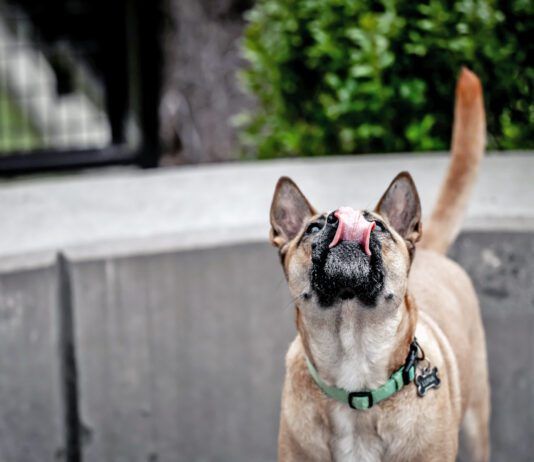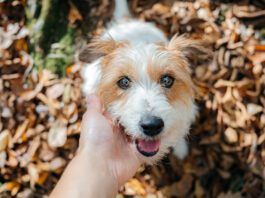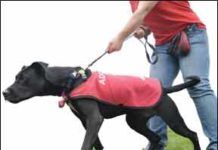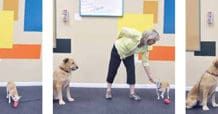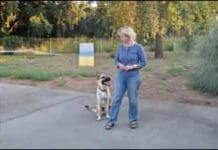Debunking the “Alpha Dog” Theory
so he's trying it again.üIs this dog dominant or acting like an "alpha dog"? No; he's been trained to jump up and bite on cue."
How to Manage Multiple Barkers in the House
It's feeding time at the Miller household. All is calm until I pick up Scooter's bowl to carry it to the laundry room where the little Pomeranian can eat without harassment from the larger dogs. As I lift the bowl from the counter, Scooter erupts with high-pitched barking and spinning, and Lucy the Corgi joins in with her deeper-but-still-sufficiently irritating vocals. It's more of an annoying bit of ritual than a dangerous or disturbing one, but it's annoying just the same, and one that would be nice to extinguish.
How to Manage Your Resource-Guarding Dog
high-value treat. Peanut (Dog A
What Is Autism?
The term Autism Spectrum Disorders (ASDs) describes a group of complex developmental brain disorders whose symptoms may appear in infancy or later in childhood, affecting speech and behavior. ASDs affects an estimated one out of every 110 children, with boys outnumbering girls three or four to one. In the United States, an estimated one out of every 70 boys is diagnosed with autism.
Building Up Your Dog’s Confidence
graceful exit!üThe "get behind" game establishes you as a human safety shield for your dog. It's good to use when you are unable to escape the proximity of something that might otherwise scare your dog. (Thanks to Sarah Richardson
Learn to Read Your Dog’s Body Signals
How many times have I heard a dog owner say, If only they could speak!" And how many times have I bitten back my first retort: "But they can speak! You're just not listening!" We humans are a verbal species. We long for our beloved canine companions to speak to us in words we can easily understand. While they have some capacity for vocal communication
Guide to Stress Signals in Dogs
Stress causes the appetite to shut down. A dog who won't eat moderate to high-value treats may just be distracted or simply not hungry, but refusal to eat is a common indicator of stress. Appeasement and deference aren't always an indicator of stress. They are important everyday communication tools for keeping peace in social hierarchies, and are often presented in calm, stress-free interactions. They are offered in a social interaction to promote the tranquility of the group and the safety of the group's members.
The Meanings Behind Different Dog Sounds
Canine vocal communications can be classified as barks, growls, howls, whines, and whimpers. Within those classifications, the sounds can have varying meanings. Your dog's voice must be taken in context with the rest of his behavior and body language for you to truly understand what he's saying to you.
Guide to Reading Canine Body Language
Despite conventional wisdom, a wagging tail doesn't always mean a happy dog. The following abridged Canine/English dictionary will help you become a skilled translator. Remember that breed characteristics can complicate the message; the relaxed ears and tail of an Akita (prick-eared, tail curled over the back) look very different from the relaxed ears and tail of a Golden Retriever (drop-eared; long, low tail). Also note that if body language vacillates back and forth it can indicate ambivalence or conflict, which may precede a choice toward aggression.
New Recommendation for Fear-Based Behavior Problems
In May, I attended a seminar given by noted veterinary behaviorist Nicholas Dodman, section head and program director of the Animal Behavior Department of Clinical Sciences at the Tufts University Cummings School of Veterinary Medicine. The seminar, “The Well Adjusted Dog: Secrets to Understanding Canine Behavior,” covered a number of behavior problems, including aggression, separation anxiety, phobias, post-traumatic stress disorder, and canine compulsive behavior.
How to Help Your Noise-Phobic Dog Get Through Loud Events
July 4th is still a month away, but in many parts of the country sound-sensitive dogs and the humans who love them are already struggling with the effects of thunderstorms. Our Corgi, Lucy, is a thunder-phobe, and we know all too well the impact thunder and firecrackers have on her (and our) quality of life. Fortunately, the following can make life better for you and your dog during noisy events.
Taking More Steps To a Calm Dog
Every behavior and training professional has seen her share of WCCS dogs. Some have developed their own programs to help humans help their dogs.


